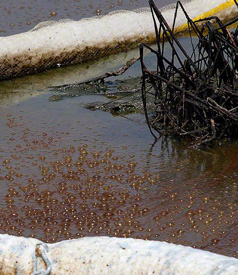The scene is post-apocalyptic. Under a gray sky, two families play in the surf just off the beach in Grand Isle, Louisiana. To get to the beach, we walk past a red, plastic barrier fence that until very recently was there to keep people away from the oil-soaked area. Now, there are a few openings that beach goers can use. The fence is left largely intact, I presume, for when they will need to close the beach again when the next invasion of BP’s oil occurs.
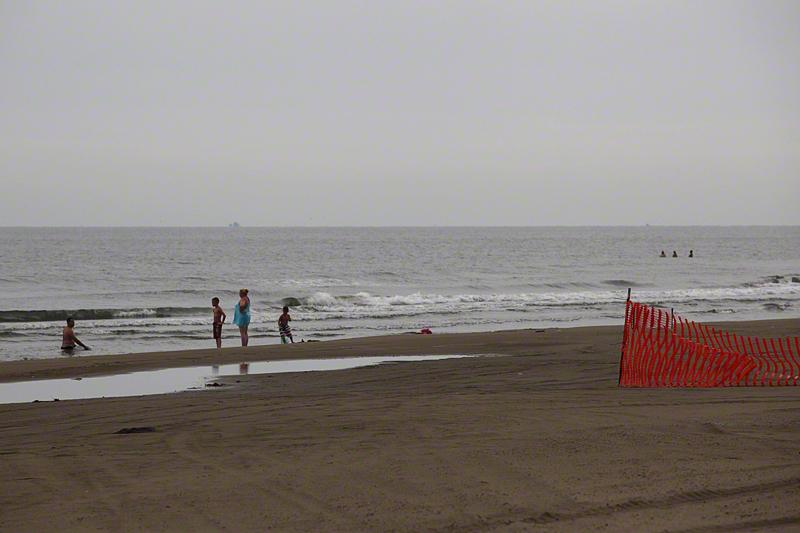
Photo by Erika Blumenfeld © 2010
A father jokingly throws sand at his little boy who laughs while dodging it. This, against a background of oil rigs and platforms looming in the Gulf. In the foreground, littering the beach, are tar balls. We stroll through the area, eyeing even more tar balls that bob lazily underwater, amidst sand ripples in the shallows … they are in the same location where the father sits, grabbing handfuls of sand to toss near his son.
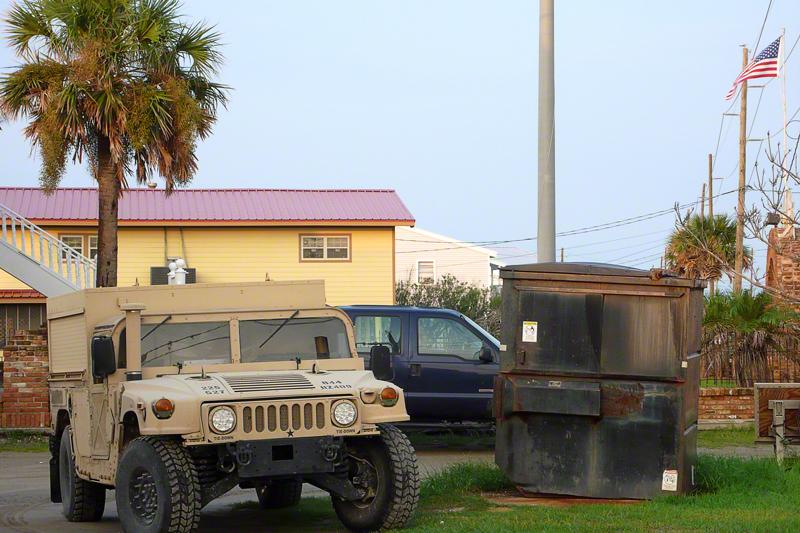
Photo by Erika Blumenfeld © 2010
We stroll back to our hotel. Beside us is a large beach house that has been rented to the National Guard. Two military Humvees, one olive green, the other tan, are parked near the road just yards from our car. It is a grim feeling here, like living in the bowels of some greed-driven, security-obsessed, lumbering giant so disconnected from its heart that reality has long since ceased to figure into its outer perception.
The next morning, we head out in a boat from Fourchon with Jonathan Henderson from the Gulf Restoration Network, his friend Randy, who is a cameraman, and Craig, our charter fishing captain and guide. It is August 16, the day that several of Louisiana’s fisheries have been reopened for shrimping.
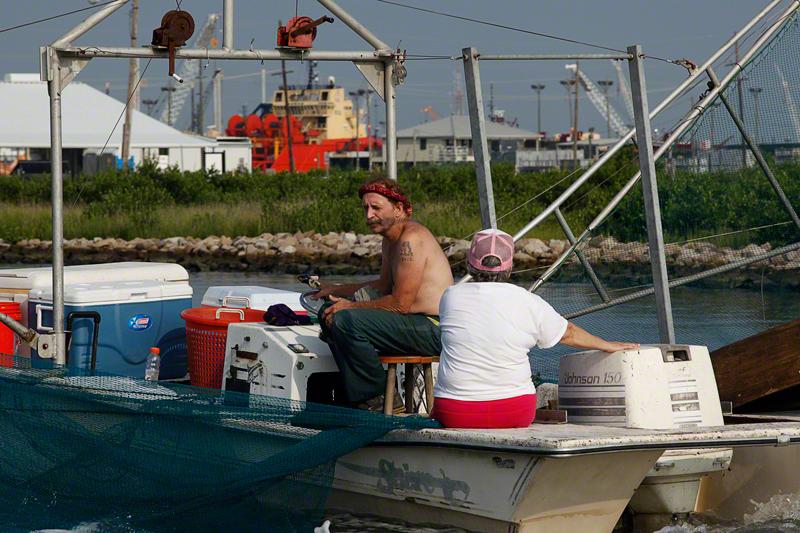
Photo by Erika Blumenfeld © 2010
Just after leaving the boat launch, we pass a shrimper coming back in.
"How did you do out there?" Craig asks him. "Nothing. Nothing at all," the despondent fisherman replies. "How much do you usually catch?" Craig asks. "Hundreds of pounds, sometimes a thousand pounds," comes the reply.
Craig looks at me and says, "That’s not good."
Minutes later another shrimper passes us, returning to port. "How’d you do?" Craig asks. "We caught 12 shrimp," he replies, "That’s one-two shrimp."
A brief reminder of the toxicity of the dispersants BP is using in the Gulf: "According to the EPA’s latest analysis of dispersant toxicity released in the document Comparative Toxicity of Eight Oil Dispersant Products on Two Gulf of Mexico Aquatic Test Species, Corexit 9500, at a concentration of 42 parts per million, killed 50% of mysid shrimp tested." Most of the remaining shrimp died shortly thereafter.
Craig worked as a deckhand on a shrimp boat when he was 12 years old, and has been on the water ever since. He knows these areas like the back of his hand, and he is torn up by what he sees. "We find fish feeding that cause fish-oil slicks atop the water," he explains as we make our way out of the bayou towards the Gulf. "But now, thanks to BP, most of the slicks we see are oil."
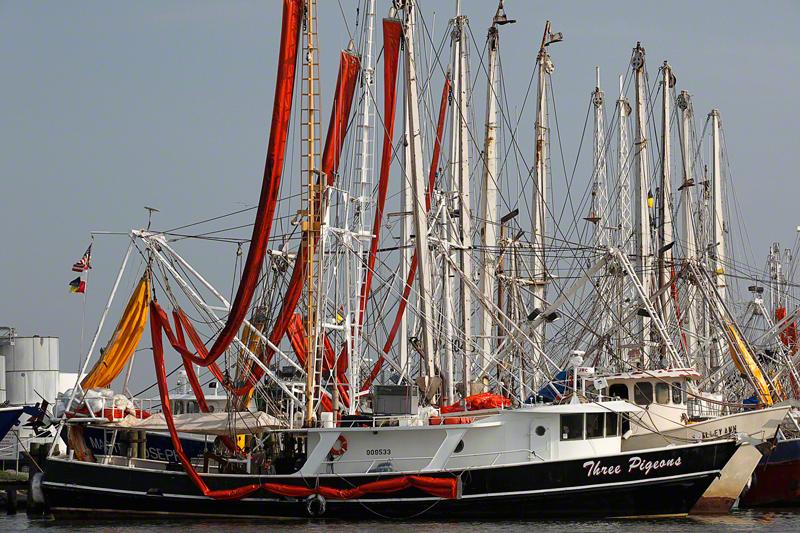
Photo by Erika Blumenfeld © 2010
A little further, we pass dozens of large shrimp boats laden with boom and skimming gear. They’ve been converted into response vessels for BP's fading Vessels of Opportunity (VOO) program that has created a false economy for the now out of work fishermen. "BP is buying out a way of life," Craig says when he sees me eyeing the boats, all of which are tied to the dock. "Generations of shrimping … done."
After a short time we arrive in Devil's Bay, to find forests of white PVC pipe sticking out of the water. The pipe is used to hold absorbent boom in place. Much of the boom is washed ashore, or gone completely. "That PVC doesn't rot," Craig comments, "It'll be there a long time."
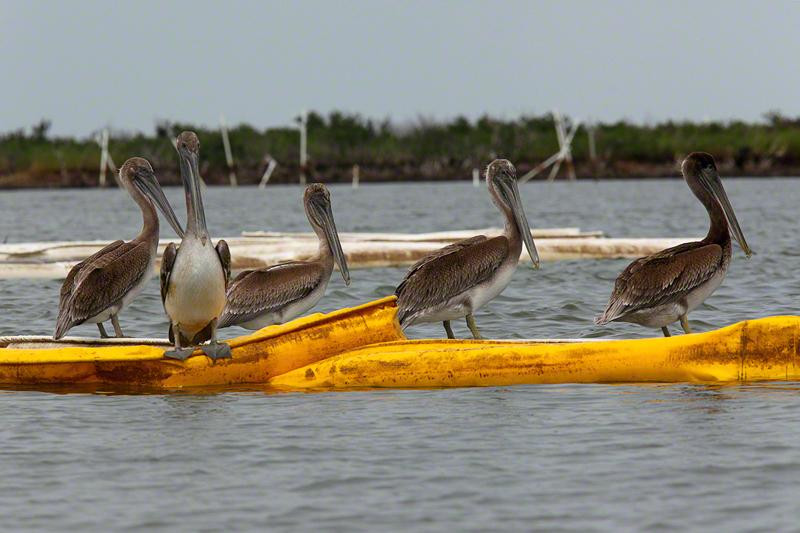
Photo by Erika Blumenfeld © 2010
Boom contaminated with oil is abundant. Craig turns the boat out towards the bay, which is empty. "Right now, there should be 50 or 60 shrimp boats in here, but now it's like this … closed, and most folks are afraid to fish. We need good testing of the seafood, and it needs to be done right. We only have one shot at this."
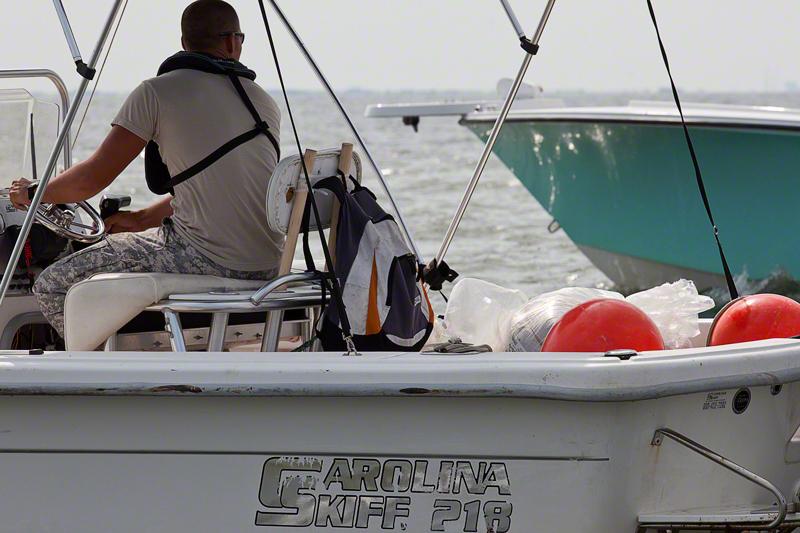
Photo by Erika Blumenfeld © 2010
Out in Devil's Bay we encounter a boat pulling a closed-off harbor skimmer: equipment used to skim up oil slicks. The boat is accompanied by an unmarked Carolina Skiff, driven by a man wearing desert camouflage pants and a tan shirt. Our captain will not let us get close enough to the boat pulling the skimmer to talk to its captain, nor will the boat's captain even look at us.
"These boats don't even have their Louisiana numbers," Craig says, annoyed. "Somebody brought these boats down here and threw them in the water, and they are not even from this state. It's another part of the scam."
I've written recently about how private contractors are being brought in from out of state to use these boats to spray dispersant on oil located by fisherman working in the VOO program in the four most heavily affected states.
We carry on to arrive at Casse-tete Ise. We find large amounts of absorbent boom washed ashore. Some of this had been there so long it is largely covered in sand.

Photo by Erika Blumenfeld © 2010
"I guarantee you they'll come pick that up," Craig says angrily, mocking BP. Given that there is boom washed ashore and oiled PVC pipes around much of the island, it's clear that BP is aware of the island being hit by oil. It is also clear that nobody has been back to check on it for a very long time.
We offload from the boat and step ashore. Oil-soaked marsh abounds, and the island smells like a gas station. Noxious fumes infiltrate my nose, causing me to cough. Piles of oiled oysters rest on the tide line.
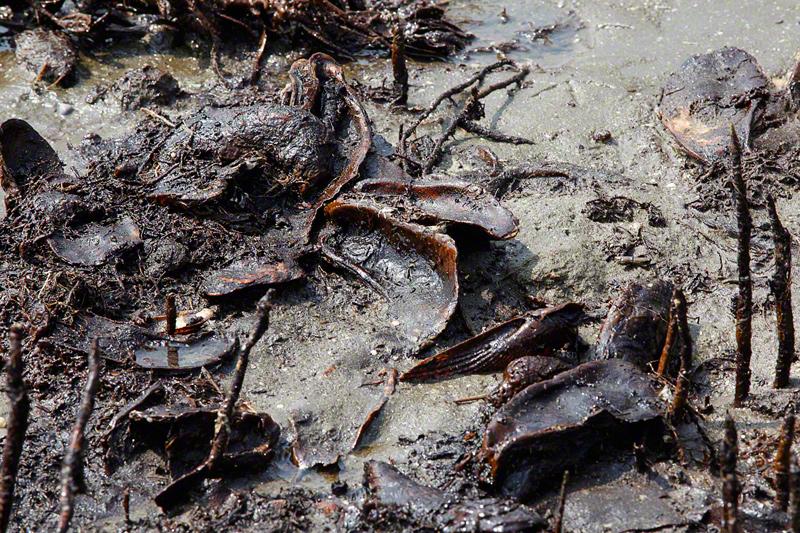
Photo by Erika Blumenfeld © 2010
Everywhere I step near the water, sheen bubbles up out of the soil. Hermit crabs scuttle over dead, oiled marsh grass. Inland, we find tide pools filled with brown oil and sheen. The horrible smell makes me dizzy and nauseous. Each of us walks around on our own, trying to take in the devastating scene. Anger and a deep sadness comingle inside me. Rage at BP melds into a broader anger at all of us for having let it come to this.

Photo by Erika Blumenfeld © 2010

Photo by Erika Blumenfeld © 2010

Photo by Erika Blumenfeld © 2010

Photo by Erika Blumenfeld © 2010
I watch a bird looking for food among the blackened stubs of marsh grass. I think of how the oil brings death to everything it touches, sooner or later.
We get back in Craig's boat and move on toward another island, but skirt the coast of this one whilst en route. Around the south side we find the entire coast oiled. Contaminated sorbent boom litters the coast above tide line.
"So when are they gonna come pick this up?" Craig asks angrily to no one. "In 10 years? So did they just not care about this island?"
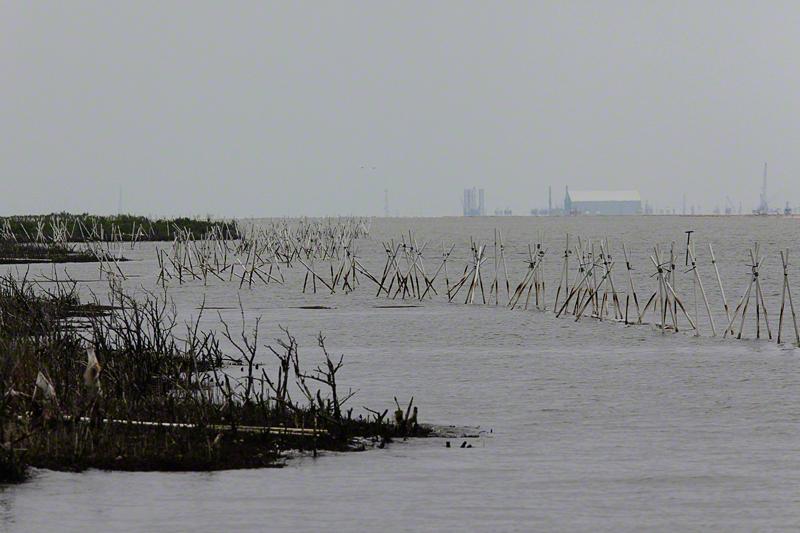
Photo by Erika Blumenfeld © 2010
There is another forest of PVC pipe sticking out of the water.
I look down at Craig's GPS map on the boat. We float in the bay, but the map shows us on land. "This is a post-Katrina map," Craig points out. "That's how fast we're losing the marsh."
Early upon our arrival in Louisiana, I was made aware of how every 30 minutes, the state loses a football-field-sized chunk of land to the Gulf of Mexico. The first of two primary causes is the hemming in of the Mississippi River, which prevents it from dumping sediment to replenish the land. The second is the oil and gas industry, which has carved out channels and canals, causing between 30-60 percent of this erosion. One third of the island on Craig's map is now gone. There are other islands on his map that no longer exist.
As we continue on, Craig says that the water seems odd, and "not as crisp" as it usually is. He says, "It seems like it has cellophane over it." Several times throughout the day Craig makes this comment. To me, given that the water has a slight chop, it is hard to see his point - but that will soon change.
We arrive at Timbalier Isle, a barrier island of Timbalier Bay. After we offload, Jonathan calls me over. He'd filled his rubber boots with water while wading ashore. He pulls off one of his boots and dumps the contents on the sand. The water is full of silvery sheen as it splashes onto the sand. We both shake our heads.
We begin walking and find tar balls everywhere. In some places, there are literally huge mats of fresh tar.
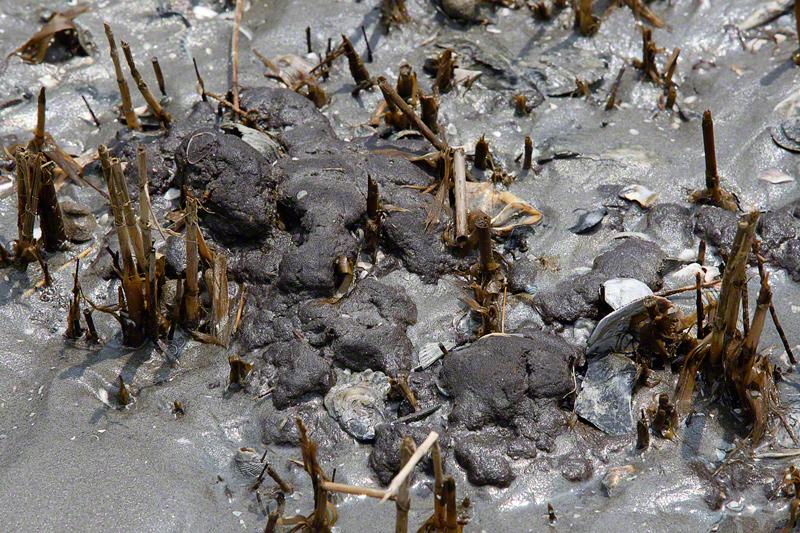
Photo by Erika Blumenfeld © 2010
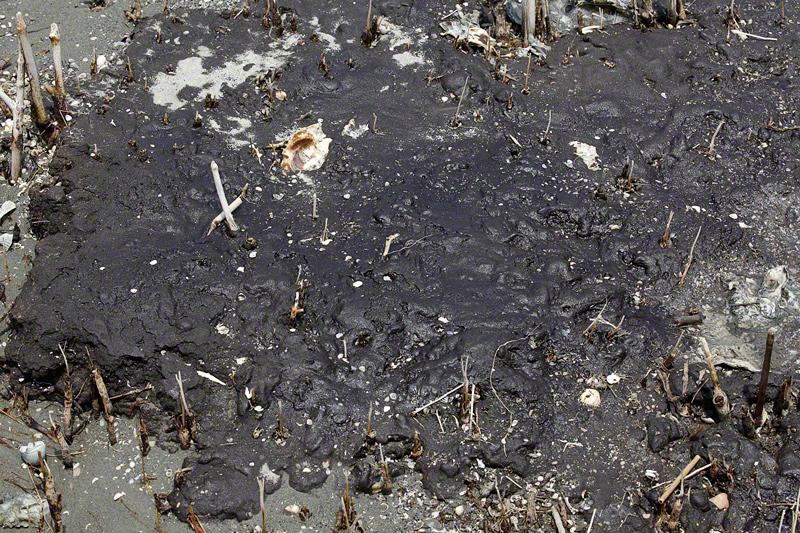
Photo by Erika Blumenfeld © 2010
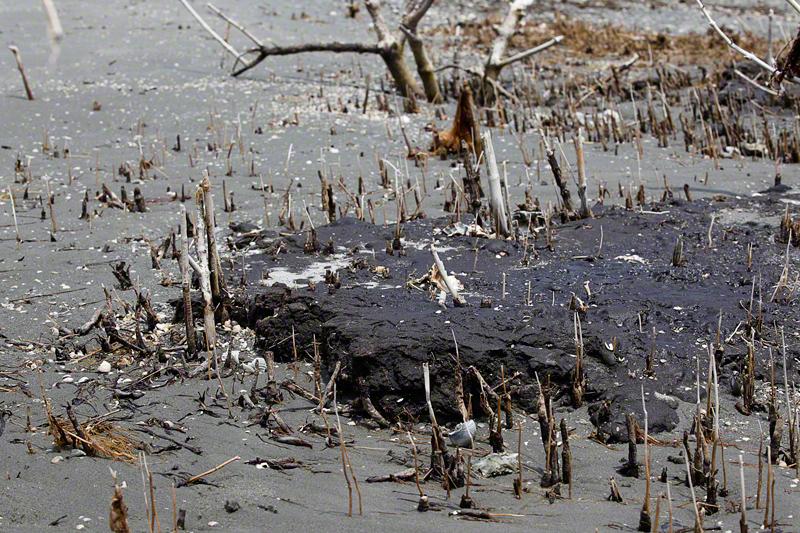
Photo by Erika Blumenfeld © 2010
The farther inland we travel, the worse things become. It's as though the entire island is a sponge filled with sheen and oil. There is a pile of yellow boom, and another of red boom, in the middle of the southern beach. BP knows of this island, too. It has had workers here. And again, no one has been here in a very long time.
We walk along the bank of an inland lagoon. Fiddler crabs skitter away from us as we walk across sheen-covered sand. The pool is covered in brown, stringy oil and sheen - the rainbow colors tracing lazily across the surface. My stomach feels sick when I think of these crabs, and all the others along the Gulf Coast, that are filtering in sheen, oil and dispersants. We watch them move toward the waters oily edge, and stop. Are they trying to enter the water, as is their nature, and can't because it is too toxic? What will become of these crabs? What will become of the marine life and wildlife that feed on these crabs?
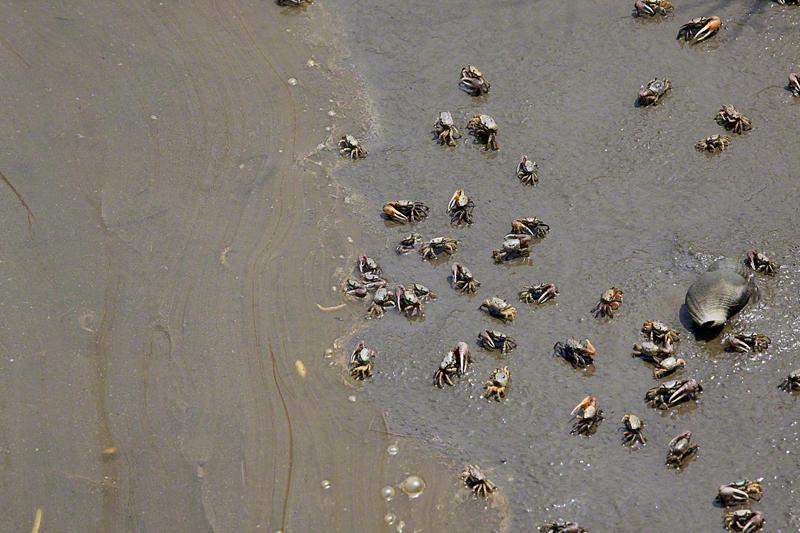
Photo by Erika Blumenfeld © 2010
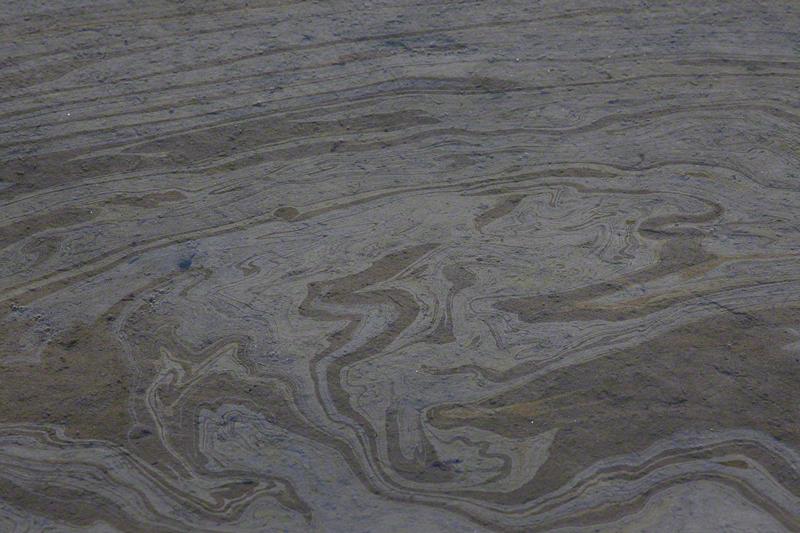
Photo by Erika Blumenfeld © 2010
There are several inland pools that are literally oil pits. We are appalled at what we find. In one of the pools, brown liquid oil floats atop areas where the sand underneath is literally black with crude oil.

Photo by Erika Blumenfeld © 2010
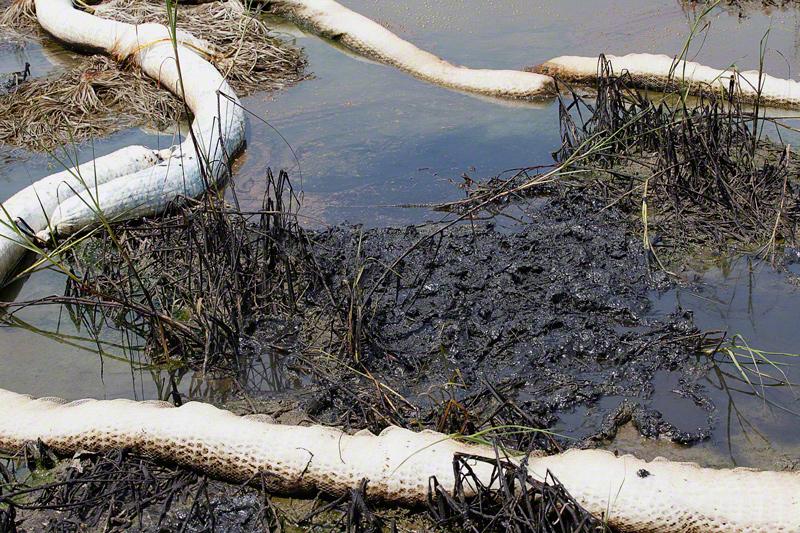
Photo by Erika Blumenfeld © 2010
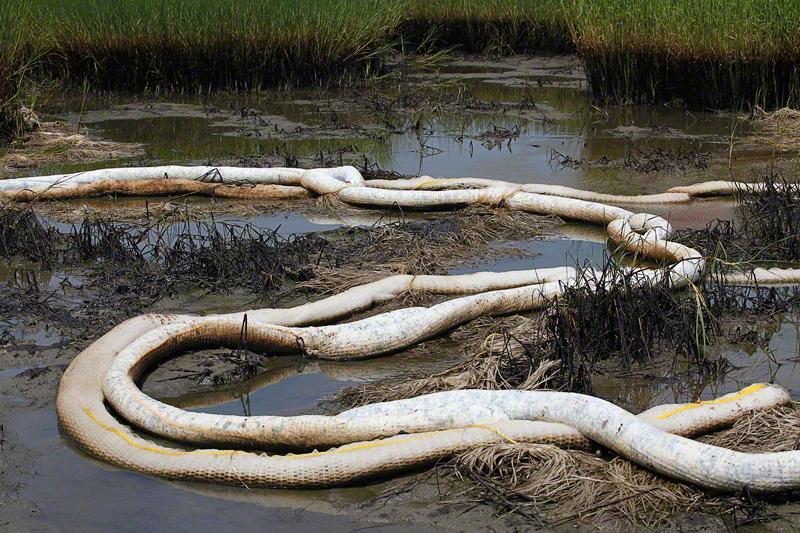
Photo by Erika Blumenfeld © 2010
The scene is apocalyptic. Sorbent booms blackened and browned with oil lay chaotically in the lagoon. It is one of the more disgusting, vile scenes I've ever seen. All of us fall silent. All we can do is take photos. The stench is overpowering. I gag. My eyes water from the burning chemicals in the air, but also from sadness. My throat is sore, my voice instantaneously hoarse, and I feel dizzy. I look over to see Erika taking photos, tears running down her cheeks.
All of us are devastated. "This is some of the worst I've seen," says Jonathan, who has been out investigating the results of the BP oil disaster every week since it started in April. He continues to take samples. I hear him gagging and look over as he coughs the stench from his lungs before bending down again to take another sample.
Shortly thereafter he finishes taking samples, and we are off, all of us hobbled and shaken by what we've just seen, along with the exposure to such a vast amount of chemicals.
During the ten-minute walk back to the boat, we hardly speak. I look out at the Gulf, the oil rigs and platforms in the distance, then down at the sheen oozing out of the sand at the water's edge as I walk alongside another tide pool.
Craig picks us up in the boat, and we begin the trip back to Fourchon. I climb up atop the "crow's nest," a small seat overlooking Craig's boat. I write in my notepad about what we've just seen, but mostly, I just look out at the Gulf. I've long since surrendered trying to get my head around the enormity and longevity of this disaster. The government cover-ups and its complicity with BP. The profiteering happening from this disaster, not dissimilar to the rampant war profiteering I've seen in Iraq.
The cost of this? The Gulf of Mexico, the ninth largest body of water on the planet, befouled with oil and toxic dispersants.
About halfway back to port we come upon a thick sheen layer that is covered in emulsified, white foam … the same kind I've seen in videos taken by VOO workers, in which dispersants have been used atop oil.
We stop so Jonathan can take more water samples. As we do so, the stench burns my eyes.
We carry on, only to pass more slicks like this. The entire day we've been in sheen, and we've traveled more than 40 nautical miles, much of it in open Gulf waters. All the water we've boated across and all the islands we've explored are entirely covered in sheen or oil.
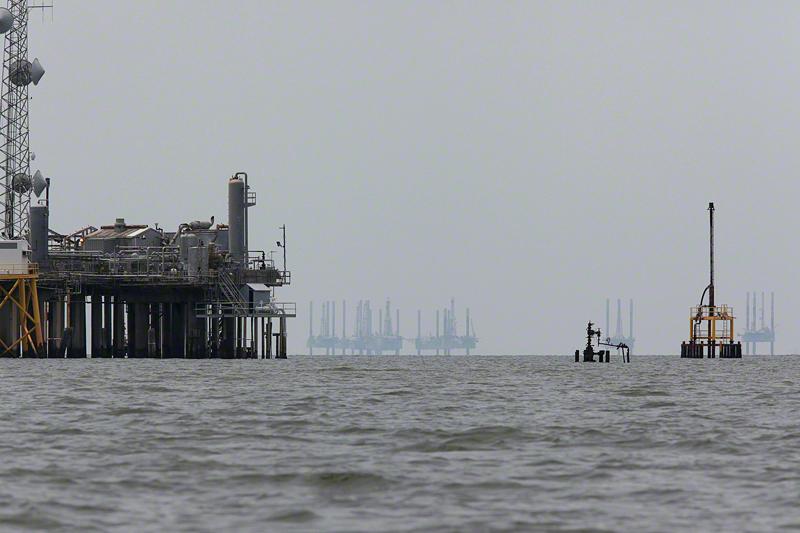
Photo by Erika Blumenfeld © 2010
From back atop my platform, I'm amazed at the myriad rigs and platforms we pass, sometimes thick enough in number to resemble floating cities.
Throughout the day, the question "what have we done" drifts into my consciousness. What have we done? How has it come to this?
Thousands of lives along the Gulf Coast are being devastated by this disaster. This is merely the beginning of yet another toxic epoch for the Gulf of Mexico, all the humans that live along the coast, and all the marine life and wildlife that make their homes here.
What have we done? How has it come to this? Where do we go from here?






.jpg)







.jpg)







